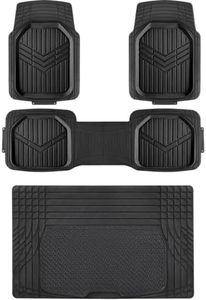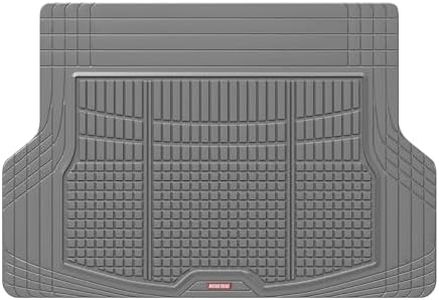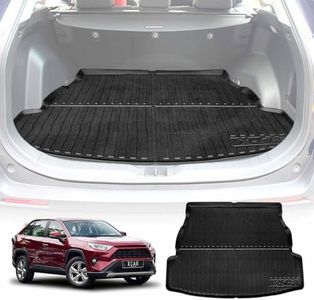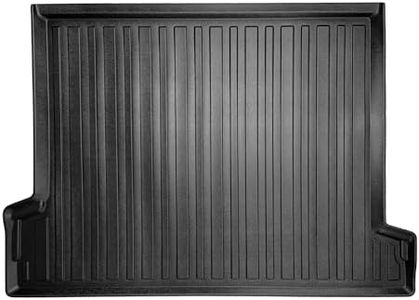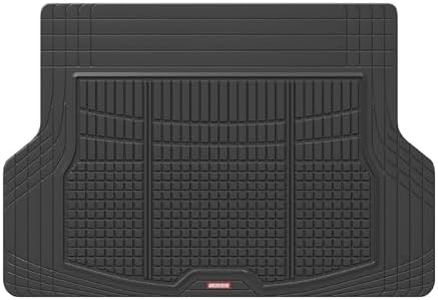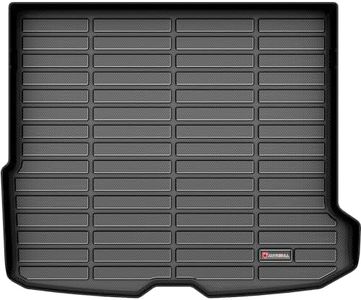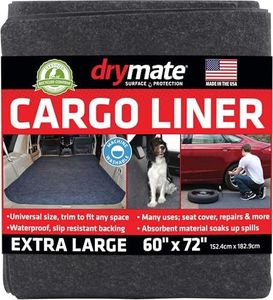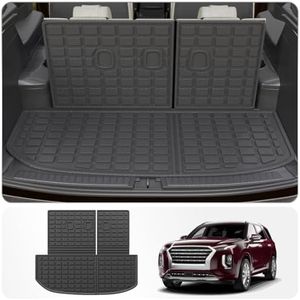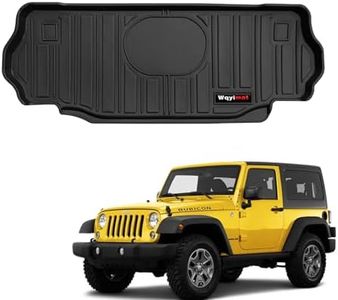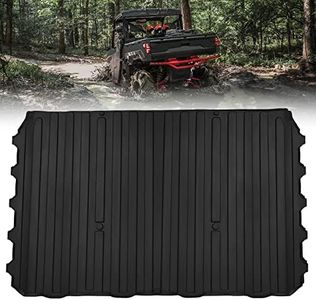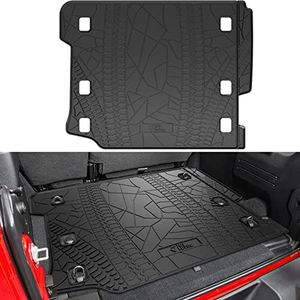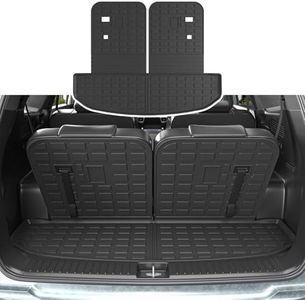We Use CookiesWe use cookies to enhance the security, performance,
functionality and for analytical and promotional activities. By continuing to browse this site you
are agreeing to our privacy policy
10 Best Cargo Liners
From leading brands and best sellers available on the web.Buying Guide for the Best Cargo Liners
When choosing a cargo liner for your vehicle, it's essential to think about how you use your cargo space and what you want to protect it from. Cargo liners are designed to shield the floor and sometimes the sides of your trunk or cargo area from spills, dirt, pet hair, and wear. The best choice depends on your lifestyle, how frequently you load and unload items, the kind of cargo you carry, and the level of protection you need. It's also important to make sure the liner fits your vehicle well to avoid sliding or coverage gaps.MaterialThe material of a cargo liner refers to what it is made from—commonly rubber, thermoplastic, carpet, or vinyl. This is important because the material affects durability, ease of cleaning, grip, and water resistance. Rubber and thermoplastic liners are waterproof and easy to clean, making them suitable for outdoor gear, pets, or frequent messes. Carpet liners look more like the original interior and provide a softer surface. If you face a lot of spills, mud, or pets, go with all-weather materials like rubber. If your cargo is lighter, like groceries or luggage, carpet liners can be sufficient.
FitFit describes how well the liner matches your specific vehicle's cargo area shape and size. A well-fitted liner will cover all areas and won't slide around. There are universal liners, which can be trimmed to size, and custom liners, which are made for specific car models. Custom-fit liners usually offer better protection since they avoid gaps. If you want maximum coverage and a neat appearance, choose a custom fit; if you're okay with some manual adjustment, a universal liner may work.
Edge DesignEdge design refers to how raised the sides of the liner are. Raised edges help contain spills, debris, and liquid, preventing them from reaching the carpet underneath. Some liners have flat edges, while others have a lip or high sides. If you often carry wet, muddy, or leaky items, high edges or a deeper lip are essential. For mostly dry or clean cargo, the edge design is less critical.
Non-Slip SurfaceA non-slip surface helps keep your cargo from sliding around during transit. Some liners have textured surfaces or special coatings for more grip, which helps if you haul fragile or loose items. If you transport items that could shift and get damaged, pick a liner with a good non-slip surface; if your cargo is usually packed tight or not breakable, this feature may be less important.
Ease of CleaningEase of cleaning tells you how simple it is to remove dirt, spills, or pet hair from the liner. Some materials can be simply wiped or hosed down, while others might require vacuuming or spot-cleaning. If you expect frequent messes, go for a liner designed to be cleaned quickly with water or a hose. If your use is lighter, then a liner that vacuums easily should be enough.
